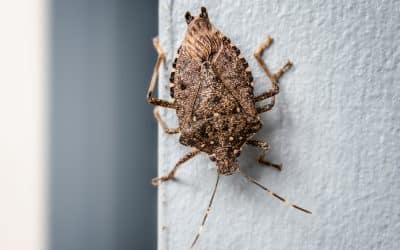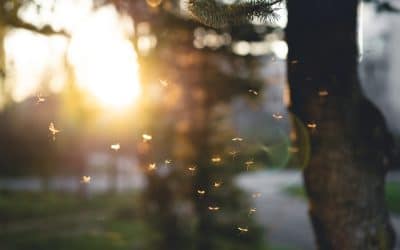
Pest Identification: Bald-Faced Hornets
Bald-faced hornets build nests three or more feet off the ground, typically in trees, shrubs, overhangs, or structures. The nests are aggressive, and bald-faced hornets attack intruders. Treatment is recommended due to their smooth stingers that allow repeated stinging. Colonies may contain 100 to 400 members, most active during the day.
Appearances peak in late summer, and the inseminated females overwinter, while others die off. Unlike other stinging insects, bald-faced hornets do not reuse nests. Stings can cause pain, itching, and swelling, with a similar risk of allergic reactions as other insect stings. They feed on soft-bodied insects, nectar, and pollen, and are attracted to meat.
Key Facts:
- Bald-faced hornets build large, ball-shaped paper nests.
- The nests are constructed annually, and abandoned nests are often destroyed by birds.
- Queens survive winter, start nests in spring, and produce sterile daughters.
- Mature colonies consist of a queen, 200 to 400 infertile female workers, brood, and, in late summer, males and reproductive females.
- Nests are built every year, and drones come from unfertilized eggs, lacking stingers.

Buzzwords
Bug Off! Keeping Stink Bugs Out of Your Home
Fall in New England brings crisp air, colorful leaves, and stink bugs. As soon as the temperatures start to dip, stink bugs start searching for a cozy spot to ride out the winter, and your home is often their top choice. Unless you know how to stop them. With a few...
Protect Your Lawn: What You Need to Know About Grubs
You work hard to maintain a beautiful yard. But if you start noticing unexplained patches or spongy turf, grubs might be the culprit. These pesky beetle larvae feed on grass roots, turning lush lawns into a patchy mess. Bottom line: they are a threat to your yard....
Buzz Off: How to Identify Common Flying Pests in Massachusetts
When August rolls around, it’s time to savor those last sweet weeks of summer. But the heat and sunshine also bring out a surge in dangerous summer pests. Many bite, others sting, and some just won’t leave you alone. Do you know what’s buzzing around your yard? From...


